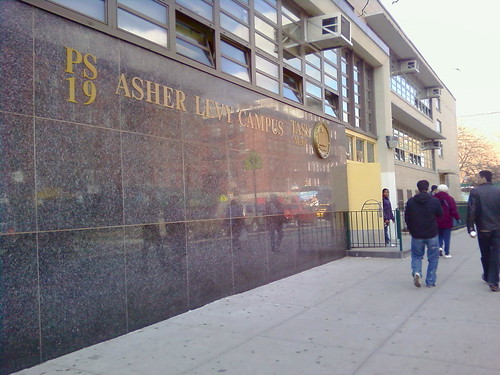Like a dusty chalkboard, the future of East Village teachers has been wiped over and rewritten several times in the weeks following Mayor Bloomberg’s proposed budget cuts, which could lead to 4,600 teacher lay-offs across Manhattan and affect East Village schools disproportionately. As politicians debate which policies will actually take shape, the district’s education officials remain calm, and say political pandering is just another lesson in history.
“We don’t want to overreact to the mayor’s scare tactics. We’re waiting to see what position to take—we don’t want to be manipulated,” said Lisa Donlan, president of District 1’s Community Education Council.
Last week was a turbulent one for the district’s education officials. On Monday, a list revealing the city’s proposed teacher lay-offs under the long-standing “last in, first out” law showed an average of 10 percent of Lower East Side and East Village school teachers would be fired based on their recent hire status, while more senior teaching positions across districts remained safe.
But by Tuesday’s close, the State Senate had voted 32-27 to amend the legislation, concerned by the inordinate number of teacher lay-offs across New York, particularly at newer schools or those with greener staffs—like those in the East Village.
One such school, P.S. 19 Asher Levy Elementary School, would lose city funding for nine out of its 32 teachers (28 percent) under the “last in, first out” law, while similar schools with seasoned staffs would lose none.
“It just so happened in the last five to 10 years District 1 has seen a lot of retired teachers,” said Katy Stokes, PTA Co-President of New Explorations Into Science, Technology and Math. “A lot of teachers were hired near the same time, and it’s a shame that because our district’s schools are so popular—with more teachers than ever applying to public schools—that our district is looking to lose some of the biggest numbers.”
Though Governor Cuomo has since proposed a new evaluation standard for teachers, judging them as “effective,” “highly effective,” “developing,” and ineffective,” and taking into account factors like student test scores and colleague evaluations, Mayor Bloomberg has criticized Mr. Cuomo for not completely eliminating seniority status from his plan
And while politicians continue to bicker over what makes the best teacher, community members remain skeptical that sifting through staff will offer a solution.
“Everyone wants to say ‘Keep the effective teachers!’ but we honestly can’t measure that. There’s this boogieman out there called ‘the bad teacher,’ but there are only green teachers, teachers that are learning and being mentored, teachers that are burnt out—and there are remedies for all of those. That’s what counseling and mentoring is for,” Ms. Donlan said.
Still, some teachers believe that eliminating “last in, first out” signifies a positive change for educators, one that more aptly recognizes a student’s needs.
“It’s been a long time coming, and it’s a step in the right direction,” said Taylor Mali, a lecturer on teacher advocacy and former East Village poetry slammer (whose poems often depict classroom encounters). “The number one factor in a student’s achievement is having a right teacher in front of a classroom, and that does not mean having the one that’s been there the longest. If they do need to beat up on teachers, at least take their students into consideration.”




